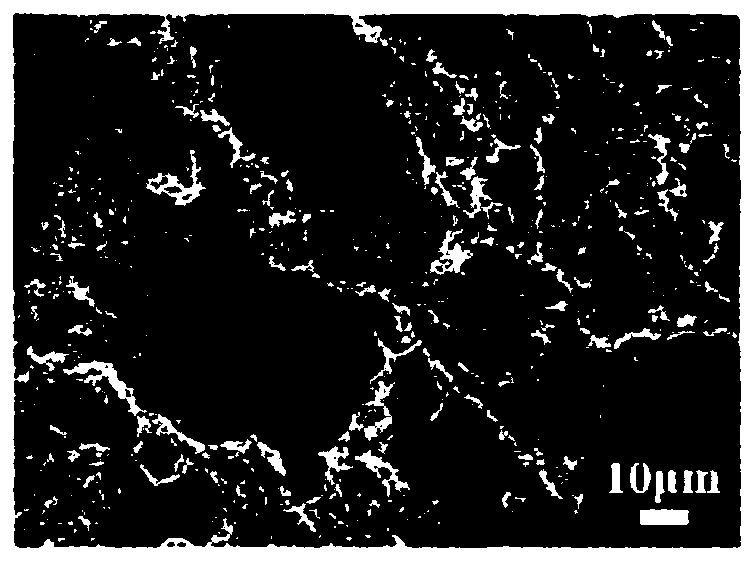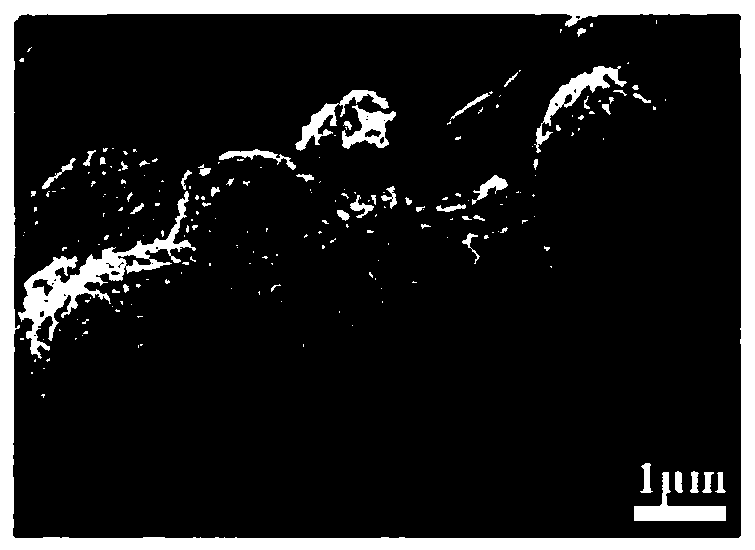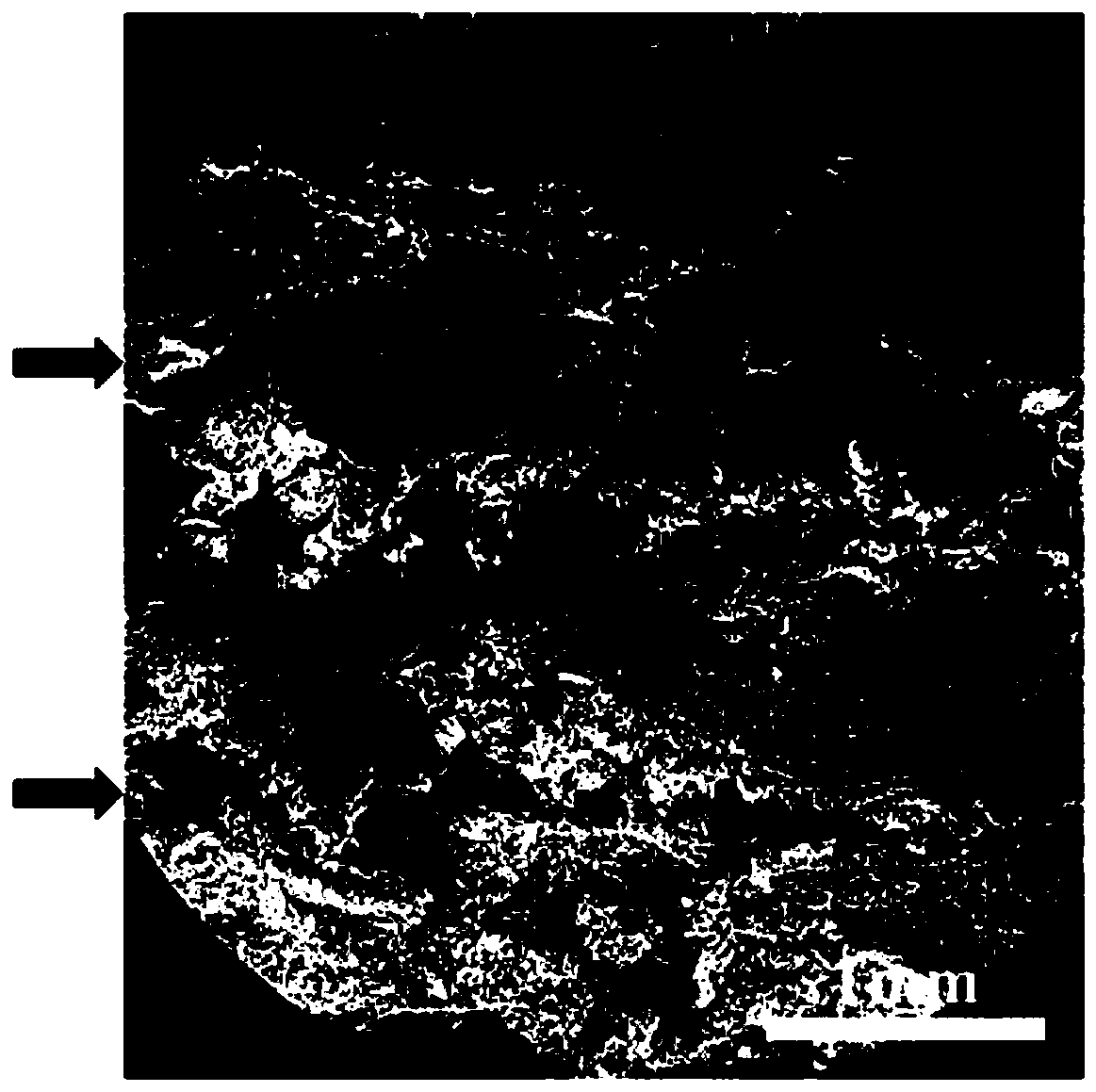Soft and hard tissue integrated regeneration-repair gradient three-dimensional fibrous scaffold and preparation method thereof
A fiber scaffold and hard tissue technology, applied in tissue regeneration, fiber treatment, prosthesis, etc., can solve the problems of brittleness, poor plasticity, difficult to meet the requirements of tissue regeneration and repair, and affect the prospects The effect of maintaining appearance and improving mechanical properties
- Summary
- Abstract
- Description
- Claims
- Application Information
AI Technical Summary
Problems solved by technology
Method used
Image
Examples
Embodiment 1
[0038] (1) Weigh 0.5g of L-polylactic acid and gelatin respectively, add them together to 10ml of trifluoroethanol, stir in a water bath at 37°C for 24h, and rotate at 400rpm to obtain a stable polymer blend solution without obvious phase separation ;
[0039] (2) Spin the blended solution in step (1) by electrospinning process, and receive it on a metal plate to obtain a non-woven fiber membrane. The spinning parameters are: voltage 20kV, receiving distance 15cm, and flow rate 0.8ml / h;
[0040] (3) 0.4g of the fibrous film obtained in step (2) is cut into fragments of 0.5cm×0.5cm, suspended in 20ml of tert-butanol, and sheared at 14000rpm for 20min with a high-speed dispersing homogenizer to obtain uniformly dispersed Fiber suspension, add 8g sodium chloride as porogen and disperse evenly;
[0041] (4) Transfer the suspension obtained in step (3) to a mold (such as a 48-well plate), then freeze at -20°C for 24 hours, and then freeze-dry for 48 hours to obtain a disc-shaped t...
Embodiment 2
[0047] (1) With embodiment 1 step (1)-(5).
[0048] (2) Soak the obtained polylactic acid / gelatin three-dimensional fiber scaffold in the prepared 5-fold simulated body fluid, soak at 37°C for 24 hours, take out the scaffold and wash it with deionized water, then freeze at -20°C for 24 hours, and then freeze-dry After 48 hours, a three-dimensional fiber scaffold in the middle layer with a mineral deposition amount of 5-20 wt.% was obtained.
Embodiment 3
[0050] (1) With embodiment 1 step (1)-(5).
[0051] (2) Soak the obtained polylactic acid / gelatin three-dimensional fiber scaffold in the prepared 5-fold simulated body fluid, soak at 37°C for 48 hours, take out the scaffold and wash it with deionized water, then freeze at -20°C for 24 hours, and then freeze-dry After 48 hours, a three-dimensional fibrous scaffold with a mineral deposition amount of 20-40wt.% of the hard tissue layer was obtained.
PUM
| Property | Measurement | Unit |
|---|---|---|
| Aperture | aaaaa | aaaaa |
| Particle size range | aaaaa | aaaaa |
Abstract
Description
Claims
Application Information
 Login to View More
Login to View More - R&D
- Intellectual Property
- Life Sciences
- Materials
- Tech Scout
- Unparalleled Data Quality
- Higher Quality Content
- 60% Fewer Hallucinations
Browse by: Latest US Patents, China's latest patents, Technical Efficacy Thesaurus, Application Domain, Technology Topic, Popular Technical Reports.
© 2025 PatSnap. All rights reserved.Legal|Privacy policy|Modern Slavery Act Transparency Statement|Sitemap|About US| Contact US: help@patsnap.com



